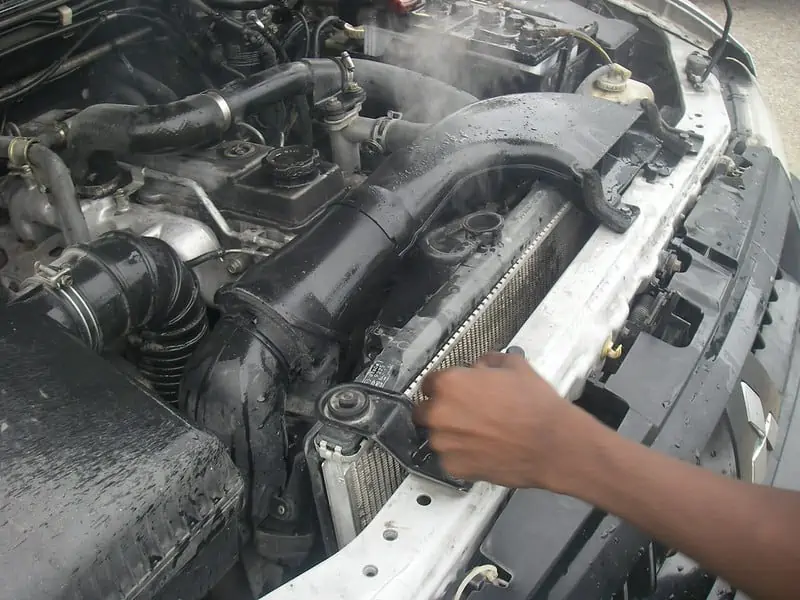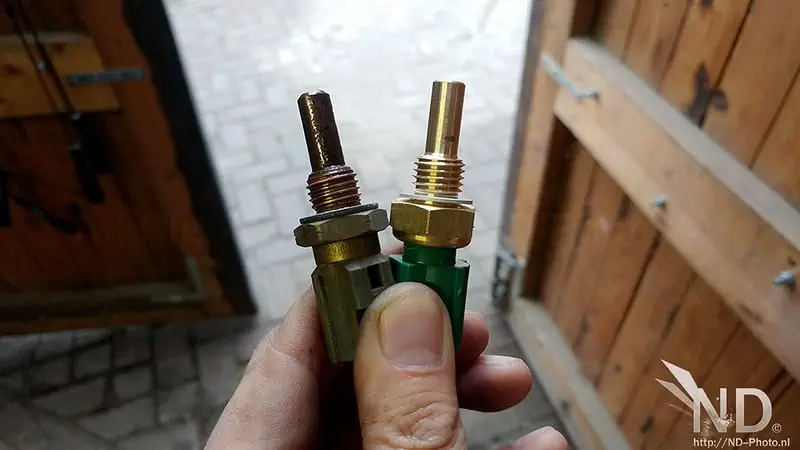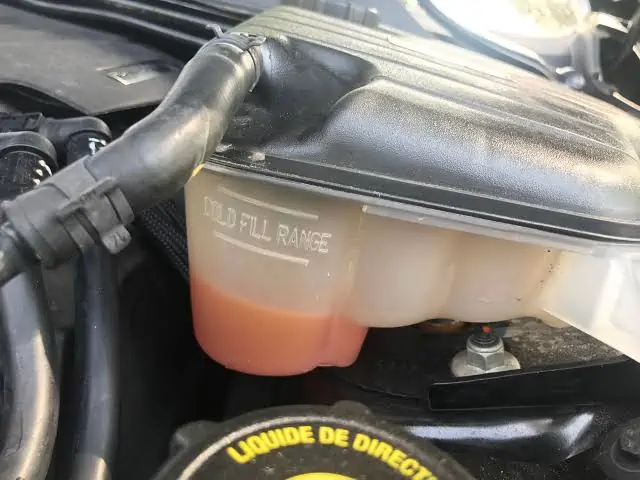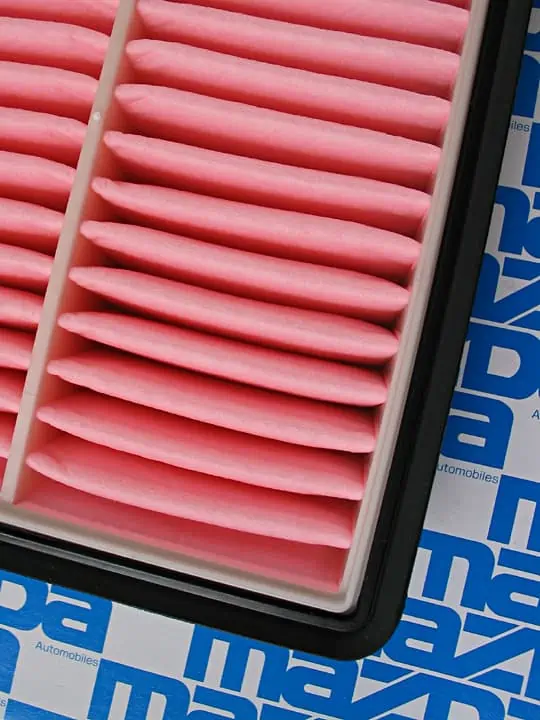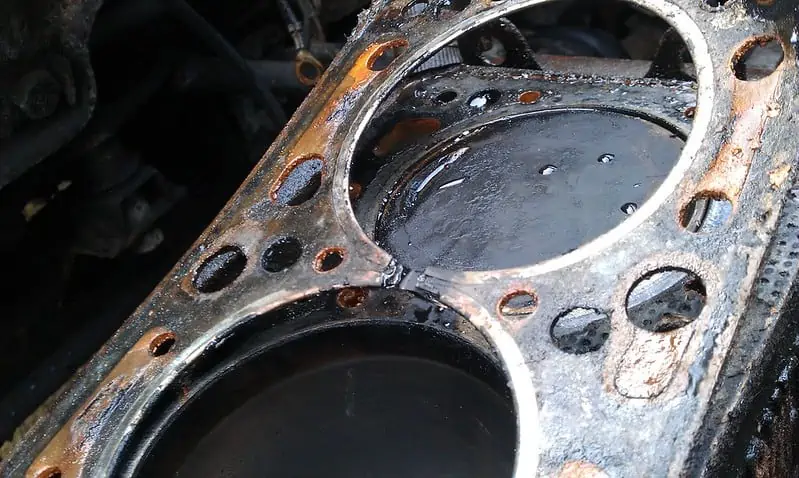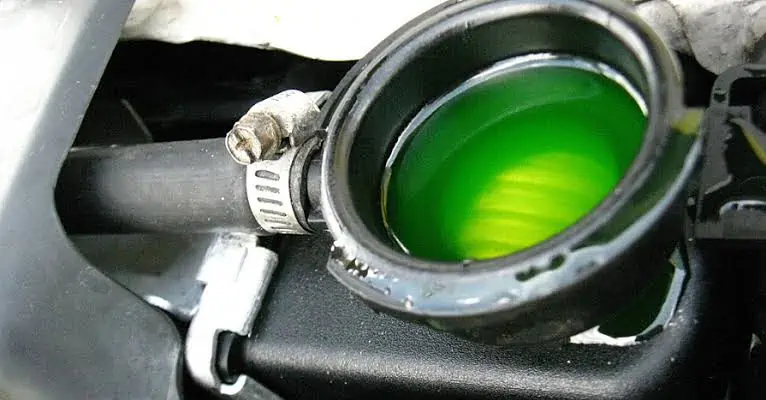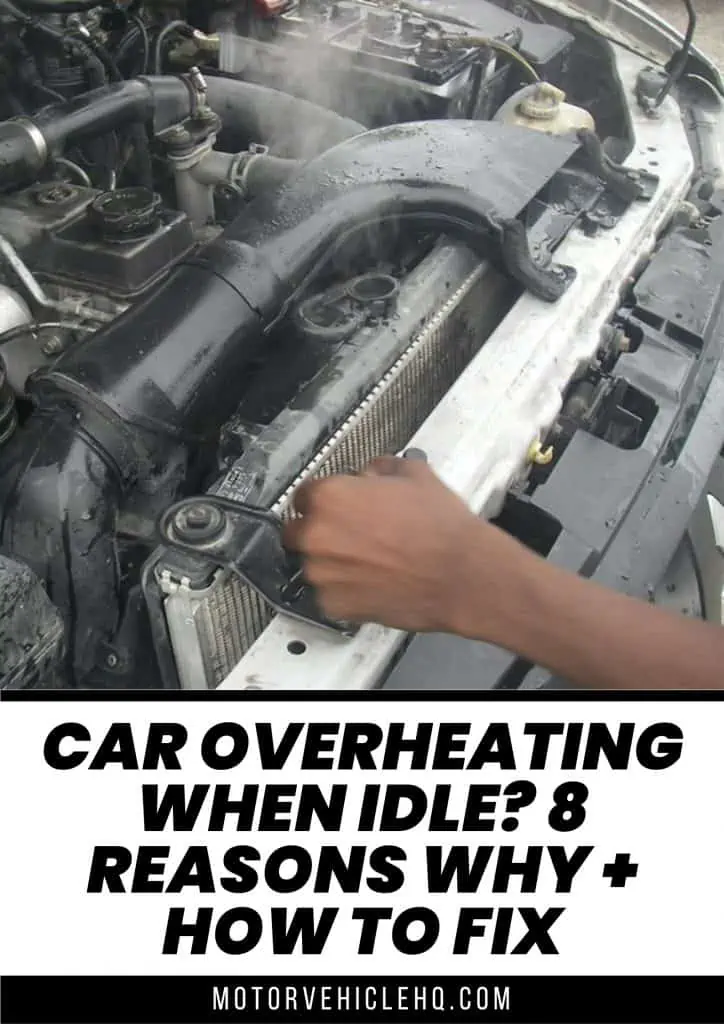One of the most common issues you will encounter while driving is your car overheating when idle. This may seem relatively minor, but it can be highly problematic if not addressed appropriately.
What is overheating?
An overheating engine by Todd Huffman / CC BY 2.0.
Overheating occurs when the engine’s cooling system cannot keep up with the demand of the combustion process. In other words, the engine is running too hot or consuming too much fuel for the cooling system to keep up. This occurs when the temperature inside the engine reaches a critical point and exceeds the boiling point of water in the radiator. The coolant becomes overheated and loses its ability to cool the engine, which causes it to heat up even more. Eventually, the coolant boils and turns to steam, which creates a vacuum inside the cooling system and forces fluid out through the overflow holes. This fluid is the “water” you see coming out of the reservoir when you remove the reservoir cap from your engine. That cloud of steam indicates that you have lost all of your coolant and are at high risk of damaging your car engine if you do not act quickly.
Eventually, the coolant will no longer be able to cool the engine, and this will cause it to reach an unsafe operating temperature.
Reasons for Car Overheating When Idle
Several factors can cause your car to overheat while stationary, including faulty coolant temperature sensors, clogged radiator hoses, low coolant levels, blown head gaskets, and so on. Let us go over each of these factors in further detail.
1. Faulty Coolant Temperature Sensors
Most modern cars have one or more coolant temperature sensors that monitor the temperature of the coolant. These sensors measure how hot the engine is getting and communicate that information to the car’s computer so it can determine how much coolant to add to maintain the correct temperature. If the sensors are not working adequately or are faulty, the computer may not detect that the engine is overheating and will increase the amount of coolant in the system.
This can lead to overfilling the system with excess coolant and leakage from the overflow valves. It is also possible that the sensors will misinterpret the temperature data and tell the computer system that the engine is cooler than it is. This can be a problem because the computer system will communicate that its engine is already at an optimal temperature and will reduce the amount of coolant pumped into the system, leading to further overheating and damage to the engine.
Coolant temperature sensors by ND-Photo.nl / CC BY-NC-ND 2.0. The coolant temperature sensor measures the temperature of the coolant/antifreeze mix in the cooling system, providing information on how much heat the engine emits.
The sensors should be changed or recalibrated to resolve this issue. The car’s owner’s manual will contain instructions on how to do this. To be sure a faulty thermostat is the issue, look out for mounting surface leaks, corrosion and rust, and deposit accumulation on thermostat surfaces.
2. Clogged Radiator Hoses
A radiator hose may become clogged with debris or rust over time, preventing the proper flow of coolant throughout the system. This can cause overheating of the engine because it will cause the engine to lose the necessary amount of coolant needed to maintain proper operating temperatures. The cooling system is designed to carry excess heat out of the engine and into the radiator so it can be released into the air.
If the radiator is not functioning correctly, the heat will be retained within the car engine and cause it to reach dangerous temperatures. If this problem is not treated promptly, the engine damage could be significant and costly to fix. Indicators of a clogged radiator include thick and discolored coolant, a malfunctioning water pump, or excessively high-temperature readings on the gauge.
3. Low Coolant Levels
Over time, coolant can evaporate due to exposure to heat and air and may need to be replaced. To ensure that the system is properly maintained and operating at optimum efficiency, the fluid level in the reservoir should be checked regularly and replaced if necessary.
An overheated engine will also require more fluid to cool it down properly. As a result, it is critical to frequently check your coolant levels to ensure that the fluid in the system is adequate. This is especially important during the summer when the weather is hot. The exact suggested interval for coolant replacement varies by manufacturer. In most cars, the owner’s manual recommends replacing the coolant for the first time at 60,000 miles and then every 30,000 miles thereafter.
4. Radiator Cap Leak
A leaky radiator cap can allow air to leak into the cooling system, making it difficult for the system to circulate coolant throughout the entire system. This can result in overheating of the engine, leading to damage to the gaskets, seals, hoses, and other cooling system components. In some cases, a leaky radiator cap can lead to the failure of the cooling system altogether, which can cause significant damage to the engine and other internal components.
5. Blocked Air Filter
An air filter that prevents adequate airflow to the engine will restrict the amount of oxygen that gets into the combustion chambers and reduce the amount of fuel that can be burned efficiently. As a result, the engine will not be able to burn all of the fuel and produce the maximum amount of power possible.
Air filter by Studio Curve / CC BY-NC-ND 2.0. The frequency with which you change your air filter is mostly affected by your driving style and condition. Consult your vehicle’s owner’s manual to find out when it’s time to change your car’s air filter. Some cars may require a change every 30,000 miles. However, many car types can travel up to 45,000 miles before needing a replacement.
An engine lacking oxygen will run hotter than one receiving adequate air supply. This extra heat can damage the engine and even cause serious harm to the vehicle occupants.
How to fix
To fix this problem, you will need to clean or replace the filter. It is a good idea to have a mechanic check the filter for you to make sure it is not causing any damage. It may be better to replace the filter instead of cleaning it, especially if it has been in place for a long time.
6. Faulty Ignition System
The ignition system supplies the spark necessary to ignite the fuel and air mixture within the engine cylinder. If the ignition system is malfunctioning, it cannot produce the spark necessary for the engine to run properly and can cause the engine to overheat. Some causes of ignition system problems include faulty wiring, a defective distributor cap, a faulty spark plug, and a problem with the fuel pump.
How to fix faulty ignition system: A defective ignition system can usually be repaired by replacing or repairing the faulty component. It may also be possible to replace the entire ignition system if the component is beyond repair.
7. Blown Head Gasket
A common cause of overheating is a blown head gasket. A head gasket is a thin strip of metal that sits between the cylinder head and the engine block. It seals the cylinders and creates a vacuum-tight seal that prevents leaks from the cylinders to the crankcase. Over time, the head gasket may wear down and cause a leak between the head and the block of the engine.
A blown head gasket by Tony Harrison / CC BY-SA 2.0. The head gasket acts as a seal between the head of each cylinder and the engine block.
A blown head gasket is a crack in the cylinder head that allows coolant to pass through it. This loss of coolant will cause the engine to overheat because the coolant can no longer dissipate the heat generated by the engine. In some cases, a head gasket can fail without causing noticeable symptoms. However, if the head gasket blows completely, it can cause severe damage to the engine and even lead to a complete cooling system failure.
How to fix
If the head gasket has blown completely, you may need to have the cylinder head replaced as well. The engine will need to be removed from the car to perform this procedure. However, you can simply avoid a blown head gasket by having it inspected for signs of damage regularly. Most head gaskets are designed to last for several years before they need to be replaced. If you notice any cracks in the head gasket, it is mandatory to have your car serviced as soon as possible. Replacing the head gasket can be completed by most mechanics in a few hours.
8. Broken radiator fans
Radiator fans are divided into two categories. The electric fan is one type, and the belt-driven fan is another. When it comes to electric fans, a malfunctioning switch or relay can prohibit the cooling fan from turning on.
A loose fan belt, on the other hand, will prevent the fan clutch from engaging. Because of this, the cooling fan will not function as needed.
Radiator fans circulate air through the cooling system to prevent the temperature inside the engine from rising too high. If one or more fans are broken, it can prevent the air from entering the cooling system and prevent it from cooling the engine adequately. Fans can sometimes get damaged or become clogged with dirt and debris and may need to be replaced if they no longer work properly.
How to fix
The first thing you should do if you discover your fans are not working is to inspect the fan belts to ensure they are not loose or broken. If they are found to be damaged, they should be replaced immediately. If these belts are in good condition, it may be a sign that a fan has failed or obstructed in some way. Check to see if your fan is connected and if it is an electrical one. You can test the fan by turning on the air conditioner, which will also cause the fan to turn on or spin. It does not turn on, it could be because of a defective fan motor, or there could be a problem with the fan switch, resistor pack, or wiring.
What to Do if Your Engine is Overheating While Idle
The first thing to do is determine the source of the overheating. Some of these issues, such as a low coolant level and a faulty water pump, are easily diagnosed. If you are unable to identify the symptoms, a physical inspection should reveal what is wrong with your engine. However, keep in mind that certain parts cannot be inspected while the engine is running or even immediately after the engine is shut off, so you will need to wait for the engine to cool down. Meanwhile, if you are stuck in traffic with no way out, you might be able to lower the temperature for a brief period.
In some cases, turning on the air conditioner may cause the electric fans to activate. This increases the load on the engine, although turning on the fans may compensate for the difference.
In other cases, turning on the heating can be beneficial. The reason for this is that the heater’s core is a large radiator that transmits heat to your automobile rather than out.
When you turn on the heater, you are expelling heat through the coolant. In some cases, it may be sufficient to keep your engine from overheating to the point where you need to take it to a workshop.
Once you’ve identified the problem, you can decide what to do next. Many of the issues mentioned above can be readily resolved without much assistance.
If you can’t figure out why your engine is overheating at idle, you should look for the nearest repair shop and seek professional assistance.
Can You Drive An Engine That Is Overheating When Idle?
If your engine is overheating at idle, the problem will not go away when you start driving. It will almost certainly get worse as you drive. If the engine still has coolant in it and the overheating is the consequence of a faulty thermostat, the coolant will begin to boil due to the high temperatures. Coolant primarily consists of water; when water boils, pressure builds up, and the hoses may explode, shooting boiling coolant all over the place. Furthermore, metals expand when heated, so the size of metallic engine components will grow as the temperature rises.
This causes them to become trapped, distort, or break off. As a result, engine damage is almost certain. The worst-case scenario would be a blown head gasket. You cannot drive your car after the engine has blown. Repairing an engine with a blown head gasket is also very difficult (this is one of the worst things that could happen to your car). Finally, additional engine components such as the timing belt, hoses, wiring, and sensors are composed of synthetic materials that tend to melt at high temperatures.
So, the simple answer is yes; you can drive a car with an overheating engine. But this should only be when you have no other option, and you should also proceed with caution as the temperature will abruptly rise if you accelerate vigorously. Also, try to stop your automobile at regular intervals and, if required, let the engine cool down.
Conclusion
An engine overheating when idle is a problem that regular maintenance and inspections can prevent. If your engine overheats frequently, there could be a problem with the cooling system or something wrong with your car. Regardless of the cause of your overheating, the sooner it is resolved, the better.
However, you can lessen the likelihood of your automobile overheating by keeping your engine clean and checking for leaks. This can help prolong the life of your car. If you are unsure of the condition of your car engine after inspection, take it to a trusted mechanic. If you notice your car is overheating, ensure you address it as quickly as possible. In most cases, an overheating idle engine can be relatively easy to address, so you shouldn’t have to wait long before your car is running as it should again.
As a final piece of advice, never pour cold water on a hot engine. This is because the engine expands as it heats, and when it cools, it gradually returns to its former size. Pouring cold water on a hot car engine will cause it to abruptly cool down, and this may cause some engine parts to fracture.


Jim Wicks is the founder of MotorVehicleHQ. With over two decades of experience in the automotive industry and a degree in Automotive Technology, Jim is a certified car expert who has worked in various roles ranging from a mechanic, car dealership manager, to a racing car driver. He has owned more than 20 cars over the past 15 years. Ask him about any vehicle you see on the road and he can tell you the make, model and year. He loves the aesthetics of all things cars, and keeps his vehicles in pristine condition.
In his free time, Jim enjoys getting his hands dirty under the hood of a classic car or taking long drives along the country roads. His favorite car? A 1967 Shelby GT500, a true classic that, according to Jim, “represents the pure essence of American muscle.”
